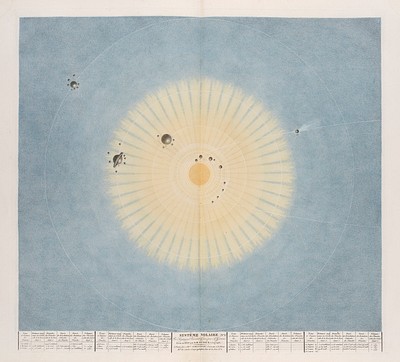Baer, Entwickl.gesch. d. Tiere
Lot 240
Absentee vs Live bid
Two ways to bid:
- Leave a max absentee bid and the platform will bid on your behalf up to your maximum bid during the live auction.
- Bid live during the auction and your bids will be submitted real-time to the auctioneer.
Bid Increments
| Price | Bid Increment |
|---|---|
| EUR€0 | EUR€10 |
| EUR€100 | EUR€10 |
| EUR€200 | EUR€20 |
| EUR€300 | EUR€30 |
| EUR€420 | EUR€30 |
| EUR€480 | EUR€20 |
| EUR€500 | EUR€50 |
| EUR€2,000 | EUR€200 |
| EUR€3,200 | EUR€300 |
About Auction
By Jeschke Jádi Auctions Berlin GmbH
Dec 15, 2022
Set Reminder
2022-12-15 09:00:00
2022-12-15 09:00:00
America/New_York
Bidsquare
Bidsquare : Auction 145 – Rare Books, Decorative Prints, Historical Photography
https://www.bidsquare.com/auctions/jeschke-van-vliet/auction-145-rare-books-decorative-prints-historical-photography-11466
Jeschke Jádi Auctions Berlin GmbH info@jvv-berlin.de
Jeschke Jádi Auctions Berlin GmbH info@jvv-berlin.de
- Lot Description
Zoologie Baer, Karl Ernst von Über Entwicklungsgeschichte der Thiere. Beobachtung und Reflexion. 3 Tle. in 1 Bd. Mit 7 gefalt. tls. kol. lithogr. Tafeln u. 1 gefalt. Tabelle. Königsberg, Bornträger, 1828-1837 (I-II.1), Königsberg, Wilhelm Koch, 1888. XXII, 271 S. 2 Bl., 315 S. V, 400 S. 4°. Marmor. HLdr. d. Zt. mit marmor. Schnitt, RVerg. u. goldgepr. RSchild (berieben, bestoßen, Deckel kratzspurig). Extremely rare first edition in 3 parts of the "fundamental treatise on the embryology of higher animals" (Horblit 9a). With 7 fold., partly col. lithogr. plates and 1 fold. table. Contemp. marbled half calf with marbled edges, spine gilt, and gilt stamped label (rubbed, bumped, cover scratched). - Karl Ernst von Baer (1792-1876) studied the embryonic development of animals and discovered the blastula stage and the notochord. Together with Pander and based on the work of Caspar Friedrich Wolff, he described the germ layer theory of development as a principle in a variety of species and laid the foundation for comparative embryology in this book. In 1826 von Baer discovered the mammalian ovum. In 1827, von Baer was the first person to observe human oocytes. It was not until 1876 that Oscar Hertwig proved that fertilisation was due to the fusion of egg and sperm. - Front endpaper with ownership inscription by Dr. Schwink and bookplate of Rudolf Virchow and Dr. Michael Lührs, title with stamp of Dr. Nützel. - Some browning, brownstaining and foxing, 1 leaf with tear, otherwise in good condition. In 3 Teilen äußerst selten vorliegende erste Ausgabe der "grundlegenden Abhandlung über die Embryologie der höheren Tiere" (Horblit 9a). - Bibl. Waller 11772. - Junk, Rara 265. - Carter/Muir 288. - PMM 228b. - Horblit 9a. - HoH 869. - Norman 101. - Garrison-Morton 479. - Grolier Medicine, S. 215. - Wellcome II, 84. - Norman Sale no. 912. - Karl Ernst von Baer (1792-1876) untersuchte die Embryonalentwicklung von Tieren und entdeckte das Blastula-Stadium und das Notochord. Zusammen mit Pander und auf der Grundlage der Arbeiten von Caspar Friedrich Wolff beschrieb er die Keimschichttheorie der Entwicklung als Prinzip bei einer Vielzahl von Arten und legte in vorliegendem Buch den Grundstein für die vergleichende Embryologie. 1826 entdeckte von Baer die Säugetier-Eizelle. Im Jahr 1827 beobachtete von Baer als erster Mensch menschliche Eizellen. Erst 1876 wies Oscar Hertwig nach, dass die Befruchtung auf die Verschmelzung von Ei- und Samenzelle zurückzuführen ist. - "Continuing the work of his friend and collaborator Christian Heinrich Pander, Karl Ernst von Baer observed the formation of the germ layers and established the germ layer theory. He described the way in which the layers formed various organs by tubulation, and he emphasized that the development of the embryo is from the apparently homogeneous to the obviously heterogeneous. In this he finally refuted the long held and much discussed theory that embryonic parts might be preformed in the egg. The publication of this book provided a solid basis for the further systematic study of mammalian development." (Grolier Medicine, S. 215). - Vord. Vorsatz mit Besitzeintrag von Dr. Schwink sowie Exlibris von Rudolf Virchow u. Dr. Michael Lührs, Titel mit Stempel von Dr. Nützel. - Tls. gebräunt, braun- u. stockfleckig, 1 Bl. mit Einriss, sonst insg. wohlerhalten. * Dieses Werk ist regelbesteuert. Auf den Zuschlagspreis fallen 23,95% Aufgeld sowie auf den Rechnungsendbetrag 7% bzw. 19% Mehrwertsteuer in der Europäischen Union an. This work is subject to the regular margin scheme. There is a 23.95% buyer's premium on the hammer price and 7% or 19% VAT on the final invoice amount in the European Union.Baer, Karl Ernst von Über Entwicklungsgeschichte der Thiere. Beobachtung und Reflexion. 3 Tle. in 1 Bd. Mit 7 gefalt. tls. kol. lithogr. Tafeln u. 1 gefalt. Tabelle. Königsberg, Bornträger, 1828-1837 (I-II.1), Königsberg, Wilhelm Koch, 1888. XXII, 271 S. 2 Bl., 315 S. V, 400 S. 4°. Marmor. HLdr. d. Zt. mit marmor. Schnitt, RVerg. u. goldgepr. RSchild (berieben, bestoßen, Deckel kratzspurig).
Condition
- Buyer's Premium



 EUR
EUR CAD
CAD AUD
AUD GBP
GBP MXN
MXN HKD
HKD CNY
CNY MYR
MYR SEK
SEK SGD
SGD CHF
CHF THB
THB




